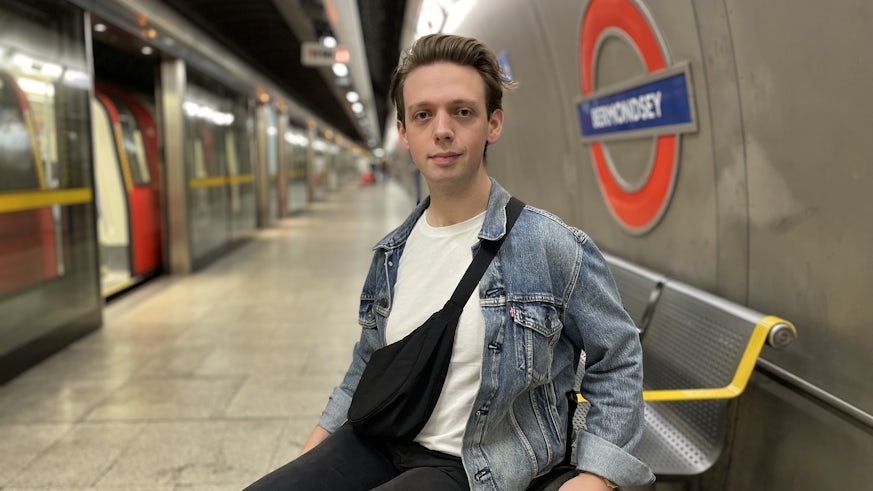“Offering people the freedom to choose how they travel”
24 October 2023

An app which uses open-source data from the London Underground to determine if tube station lifts are operating is being developed by a Cardiff University graduate.
Cellan Hall, 25, originally from Bridgend and now living in London, says he wants to raise awareness of accessibility issues for wheelchair users like himself and other people who depend on access to public transport to live and work in big cities.
Cellan, who uses a manual wheelchair, has cerebral palsy. The disability, which primarily affects his lower limbs, makes it difficult for him to walk long distances without assistance.
While Cellan can drive with the help of hand controls, since moving to London he mainly uses the Underground, relying on navigation apps like Google Maps or Citymapper to understand which routes are accessible.
Cellan said: "These apps have built-in accessibility features that indicate which Underground routes are accessible for me, which is incredibly helpful.
"However, there have been so many occasions when I’ve followed the navigation only to discover that a lift I relied on was out of order, meaning the route was completely inaccessible to me.
"When this happens, I have to reroute my journey which can really disrupt my day."
Accessible, safe and efficient
While the official Transport for London (TFL) app displays lift disruptions on affected areas of the London Underground map, it often only offers a single accessible route.
Cellan wanted the freedom to choose his own routes while ensuring a safe journey, so decided to take matters into his own hands.

As an advocate for open-source software, he developed a Python library to meet his accessibility requirements. The system draws on freely available TFL data which provides information on lift disruptions across the Underground.
Cellan said: "I discovered the data is accessible to the public and TFL actively encourages developers to use it when creating their own tools.
"I created a Python client that allows me to customise the responses according to my requirements. So, by making a straightforward request, I can obtain all the necessary details to ensure my journey is accessible, safe and efficient."
Cellan, who completed his undergraduate and postgraduate study at Cardiff University on the Physics with Astronomy (BSc) and Data Science and Analytics (MSc) programmes, said the project has given him an opportunity to work with new developer toolkits such as HTTPX and Typer, expanding his skill set in the process.
More work to be done
Cellan’s Python library is freely available for developers to use and expand upon and he plans to collaborate with other developers to incorporate natural language processing for journey planning so that users can ask questions like "what are the accessible routes from London Paddington to Canary Wharf?" or "at what time of day is this route least crowded?"
But, Cellan says, these kinds of features should be more easily accessible to individuals who are not developers too.
"I’m grateful for the efforts and resources invested in making the Underground more accessible. It enables me to remain independent for the majority of my journeys. But there is always more work to be done," he said.
"The companies developing these apps must continue engaging with diverse working groups that include individuals from various backgrounds.

"Offering people the freedom to choose how they travel is empowering and opens up opportunities that were previously unattainable. Ten to 15 years ago, I would not have had the flexibility and freedom to navigate London as I do now. The progress made in accessibility has made a significant difference in my ability to explore and navigate the city. It’s crucial that work continues!"

